Any.do and Todoist are two popular task management apps that we like a lot for their ease of use and simple overviews. Though neither will be storming the gates of our best project management software roundup (click that link for the full list), they can help you keep track of tasks and restore order to your day. To find out which is the best pick for you and your situation, our experts put together this Todoist vs Any.do comparison.
Key Takeaways:
- Both Todoist and Any.do are to-do lists first and foremost, meaning that they’re great for keeping track of simple tasks, not whole projects.
- With its extensive capabilities, Todoist is superior to Any.do for task management. Todoist gives users more flexibility and control, while Any.do focuses on straightforward simplicity.
- Both programs have a plan geared toward multiple users, which add extra features like you’d find with more advanced project management software.
- Although the apps are very similar, the main difference between Any.do and Todoist is that Todoist offers a lot more functionality on its free plan.
In the end, the choice between Any.do vs Todoist is going to be pretty personal: Both have a lot going for them and picking one or the other will have a lot to do with personal taste. Thankfully, both have stellar free plans you can make use of to figure out which is the better fit, or you could just read our Todoist review and Any.do review for our experts’ take on each.
However, if you ended up on this page because you’re looking for something to handle larger teams or full projects, then neither Todoist nor Any.do is a great pick, as they manage tasks rather than projects (read about the difference in our task management vs project management article).
Instead, if you need something more than productivity apps, we recommend you check out our monday.com review, which is a more complete option.
| $4 / month(All Plans) | $2.99 / month(All Plans) | |
| Review | Review | |
| Kanban board | Teams | |
| List | ||
| Calendar | ||
| Timeline | ||
| Spreadsheet view | ||
| Gantt charts | ||
| Workload planning | ||
| Long-term planning | ||
| Multiple project management | ||
| Dependency management | ||
| Native scrum management | ||
| Set user permissions | ||
| File storage | ||
| Time-tracking | ||
| Built-in integrations | ||
| Reporting features | ||
| Free plan | ||
| Free Trial | 30 days | 14 days (Teams) |
| Web app | ||
| Windows | ||
| MacOS | ||
| Android | ||
| iOS | ||
| Ticket-based support | ||
| Tutorials | ||
| Knowledgebase | ||
| Forum | ||
| Live chat | ||
| Phone support |
-
There are few actual disadvantages to using Todoist; it’s a solid app.
-
It really depends on what you’re looking for, but for our money we recommend checking out Todoist, Any.do and TickTick for solid productivity apps with lists.
-
Todoist is definitely one of the best apps for task management, but there are other options as well.
{“@context”:”https:\/\/schema.org”,”@type”:”FAQPage”,”mainEntity”:[{“@type”:”Question”,”name”:”What Are the Disadvantages of Using Todoist?”,”acceptedAnswer”:{“@type”:”Answer”,”text”:”
There are few actual disadvantages to using Todoist; it\u2019s a solid app.\n”}},{“@type”:”Question”,”name”:”What Is the Best To-Do List App?”,”acceptedAnswer”:{“@type”:”Answer”,”text”:”
It really depends on what you\u2019re looking for, but for our money we recommend checking out Todoist, Any.do and TickTick for solid productivity apps with lists.\n”}},{“@type”:”Question”,”name”:”Is Todoist the Best App for Task Management?”,”acceptedAnswer”:{“@type”:”Answer”,”text”:”
Todoist is definitely one of the best apps for task management, but there are other options as well.\n”}}]}
Before we get started, we must note that we’re comparing only the personal versions of our two apps. Both have editions for teams, but we figure the overwhelming majority of our readers are more interested in a solution that will help them keep track of personal tasks, so we’ll focus on that. Freelancers especially will appreciate Todoist and Any.do, despite neither making it into our best project management for freelancers selection. The versions for teams seem to be pretty solid overall, but in most cases they aren’t up to battling it out with proper project management tools — not even the free versions. As such, we’ve chosen to leave team plans out of the discussion, though we will mention them here and there as we go along. The rest of the comparison is pretty simple: we go over five rounds that correspond with our criteria in our project management reviews and declare a winner for each one. At the end, we tally the points. Remember: our project management experts review each service independently of any affiliate deals. We judge them based solely on merit, not the depth of their pockets. Now, let’s get started. When it comes to features, Todoist is the clear winner, as it simply can do a lot more than Any.do can. While Any.do is basically just a list with some small added doodads, Todoist offers a much more comprehensive package that includes a small calendar and even a rudimentary kanban board. It’s no real contest. Both Any.do and Todoist are pretty much the same when it comes to the basics: you get a list with bubbles on the left of each entry. Click the bubble and the task disappears, or grays out. There’s not much else to say, really, and your preference between the two programs will largely depend on whether you like how the list works; more on that in our user-friendliness round. Any.do’s list has the same underlying philosophy as Todoist’s, though it approaches it a little differently. Functionally, they’re pretty much the same, though. Upgrading Any.do to the paid version gets you a few extras, like themes, the ability to set tasks as recurring and a few other bits and pieces. It should be mentioned, though, that Todoist has several of these features in the free version already, so Todoist wins here, as well. One interesting feature that you have to pay for regardless is location-based reminders, which alert you that you need to do something when you’re near a specific location. Examples can include picking up your dry cleaning, or asking in a shop if they carry a specific product. This is very handy, especially for people who juggle lots of small tasks. When it comes to moving past the list, we get into territory where there’s no real contest between Todoist and Any.do. Let’s start with one of the most important features: namely, the ability to plan ahead. Any.do limits you to just seven days, while Todoist allows you to plan as far ahead as you’d like. That said, neither offers a proper calendar on the personal versions (Any.do has one for teams), forcing users to rely on an integration with Google Calendar if they need an at-a-glance overview of what’s coming up. Setting up the integration is easy enough — it’s literally one click with Any.do vs two or three with Todoist — but we’re not huge fans, either way. As you can read in our TickTick review, there’s at least one task manager that offers a built-in calendar, albeit on its paid plan, so it’s not an impossible ask. Another handy feature is a kanban board. Any.do only offers one on the team plan, while Todoist has it on the free one. Though it won’t be winning our best kanban app prize, it’s pretty decent overall and it’s nice that you don’t need to reach out and use Trello (read our Trello review) for some tasks and use Todoist for others. That said, if you do need to integrate apps with either Any.do or Todoist, you’re sitting pretty. Both offer a ton of third-party integrations, mostly the usual suspects like voice assistants and email providers. We also saw some of the best cloud storage providers lurking there, as well as suites like Microsoft Office and Google Workspace. More important than these “direct” integrations might be how nicely both Any.do and Todoist play with no-code automation solutions. Zapier and IFTTT seem to have the most on offer, though Make (formerly Integromat) also has some scenarios available (read our Make guide to find out more about this nifty service). When you add it all up, as much as we like Any.do, Todoist is probably the better choice if you need more than just a list. Comparing pricing between Any.do and Todoist is an interesting exercise as the upgrades to the personal plan practically cost the same (unless 12 cents per year counts as a big difference for you). That said, they offer some very different functionality. Todoist seems to focus on making their upgrade more interesting for freelancers, with the ability to add more collaborators and increased file upload limits. The cap on the number of projects is higher, and it adds customizable themes and location-based reminders. Any.do seems to have chosen to make their upgraded app more interesting for non-business users. For example, you can set recurring tasks, create themed lists and add tags to tasks. There’s also a WhatsApp interaction for people who are glued to the messaging app. All things considered, it’s pretty hard to decide which upgrade is better as it all boils down to what you’ll be using them for. If you need a colorful list with WhatsApp integration, use Any.do. If you need to collaborate with other freelancers or give subcontractors access to your tasks, use Todoist. As such, we’re going to play it safe and declare this round a tie. There is a tiny little caveat to the above: the free plan. As we discussed in the features round, Todoist offers more in its free version than Any.do does. If you need extras like a kanban board or a better calendar, then Todoist is the better option. If all you need is a list, though, then the next round may be interesting, where we talk about ease of use. As we’ve alluded to a few times in the previous rounds, Any.do is the winner when it comes to user-friendliness. This is not to say that Todoist is some kind of hellish contraption where you feel nothing but frustration (we have Podio for that), we just like it a tiny bit less than we do Any.do. The main reason for that is Any.do’s bright and cheery interface. The standard theme is a mountainous landscape which, if a little lofty, does cheer you up a bit when you open your to-do list in the morning. Though it has some shortcomings in other departments, this is one thing it does better. Todoist, in contrast, is a lot more utilitarian. Again, it’s not ugly by any means, it’s just clear that it’s here to get the job done; no more, no less. The handful of themes you can choose from just change some colors around; there are no sweeping landscapes for Todoist. Other than looks, though, the two programs behave pretty much the same way. Click a button to create a task, enter a title, add some details and you’re done. It all handles really well, and you can even navigate large chunks of both programs using keyboard shortcuts. When you need to know when a task is due, or just want to see what the days ahead look like, you can navigate through different views by using the sidebar (Todoist also lets you access the board and the calendar from there). There’s really nothing to it. This simplicity carries over to the mobile app for both Any.do and Todoist. Regardless of whether you’re on Android or iOS, you get a very similar feel to the desktop apps. Everything is handled right there and you never feel like you’re looking for stuff. If anything, Any.do feels a little smoother on mobile. Still, though, Any.do looks just that tiny bit more attractive, giving it its first win in this matchup. With the scores equal, let’s see if our next round is a tiebreaker. When it comes to customer support, both apps are pretty solid, though Any.do does end up carrying the round because its knowledgebase is up to date, while Todoist seems to be lagging a bit. Other than that, though, expect a very similar experience when using either app. Though both are as simple as can be to use, there is always the chance you’ll run into an issue. Neither service has a forum, but both have excellent knowledgebases that you can use to fix your issue. As we said, though, Todoist’s is a little out of date, meaning that sometimes you’ll need to puzzle a bit before you’re back to work again. It’s not a huge issue, but it can be a little annoying. If you need support, both companies’ support staff can be reached using a ticketing system — there’s no chat or phone — and generally you’ll receive a reply relatively quickly. Any.do says it responds slower to free users, but that wasn’t the case in our experience. We go into the last round now, where Any.do clinches it. This is mainly due to it having a slightly better privacy policy, while both services do well enough when it comes to security. Your data is transmitted using TLS, which is about as good as it gets, and stored using Amazon Web Services servers, which isn’t as good, but does alright despite the occasional leaky bucket. Todoist drops the ball a little when it comes to your privacy, though. While we like the clear language of the privacy policy, we don’t like how the app can store data for up to six years and reserves the right to sell data to vendors at a later date if the company is sold. It emphasizes that it doesn’t do so now, but a firmer guarantee would have been welcome. Any.do’s privacy policy is a little better. While it also admits to collecting data to improve its services (common language across the industry), it makes it very clear that data is not sold. However, the company also may sell your data along with the rest of the company if there’s ever a takeover. Neither service is a great example when it comes to privacy, but we’ll give it to Any.do by a nose. Thanks to the last two rounds, Any.do is the clear winner of this battle. However, we have a feeling that for most people it will come down to how they use these two programs. Most freelancers will likely find Todoist a slightly better deal, and people who just need a personal to-do list will probably prefer Any.do. Overall Winner: Any.do However, the great thing is that you don’t need to take our word for it: both Any.do and Todoist have perfectly good free plans you can use to give them a spin and make up your own mind. If you need similar comparison guides, we compared Asana vs Todoist to help you evaluate Todoist further. You can also find more task managements apps in our best Wunderlist alternative piece. Did you try out either of these two excellent task management apps yourself? Or are you a fan of another entirely? Let us know in the comments below and, as always, thank you for reading. The post Todoist vs Any.do 2023: From To-Do to Ta-Da appeared first on Cloudwards.Todoist vs Any.do: Which Is the Best To-Do List App?
1. Features
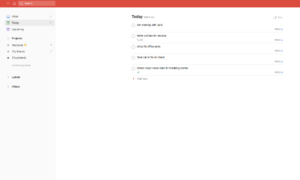
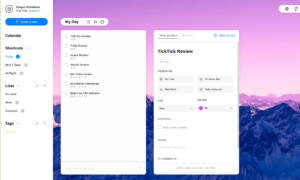
Any.Do Premium Features: Location-Based Reminders, Themes & More
Calendars

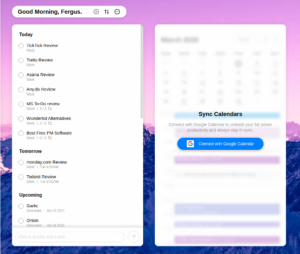
Boards and Integrations
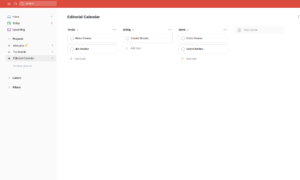
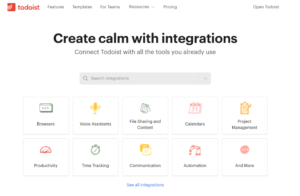
2. Pricing
Todoist Pricing
Any.do Pricing
Free Version
3. User-Friendliness
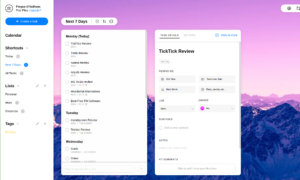
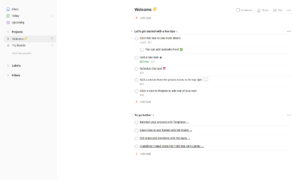
Task Details
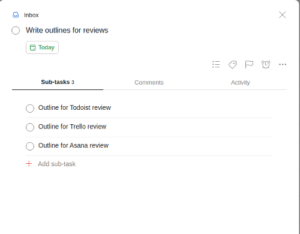
Mobile Apps
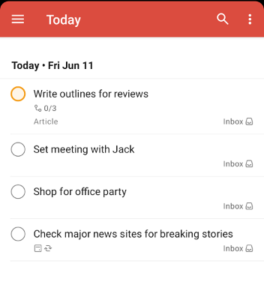
4. Customer Support
5. Security & Privacy
The Verdict



